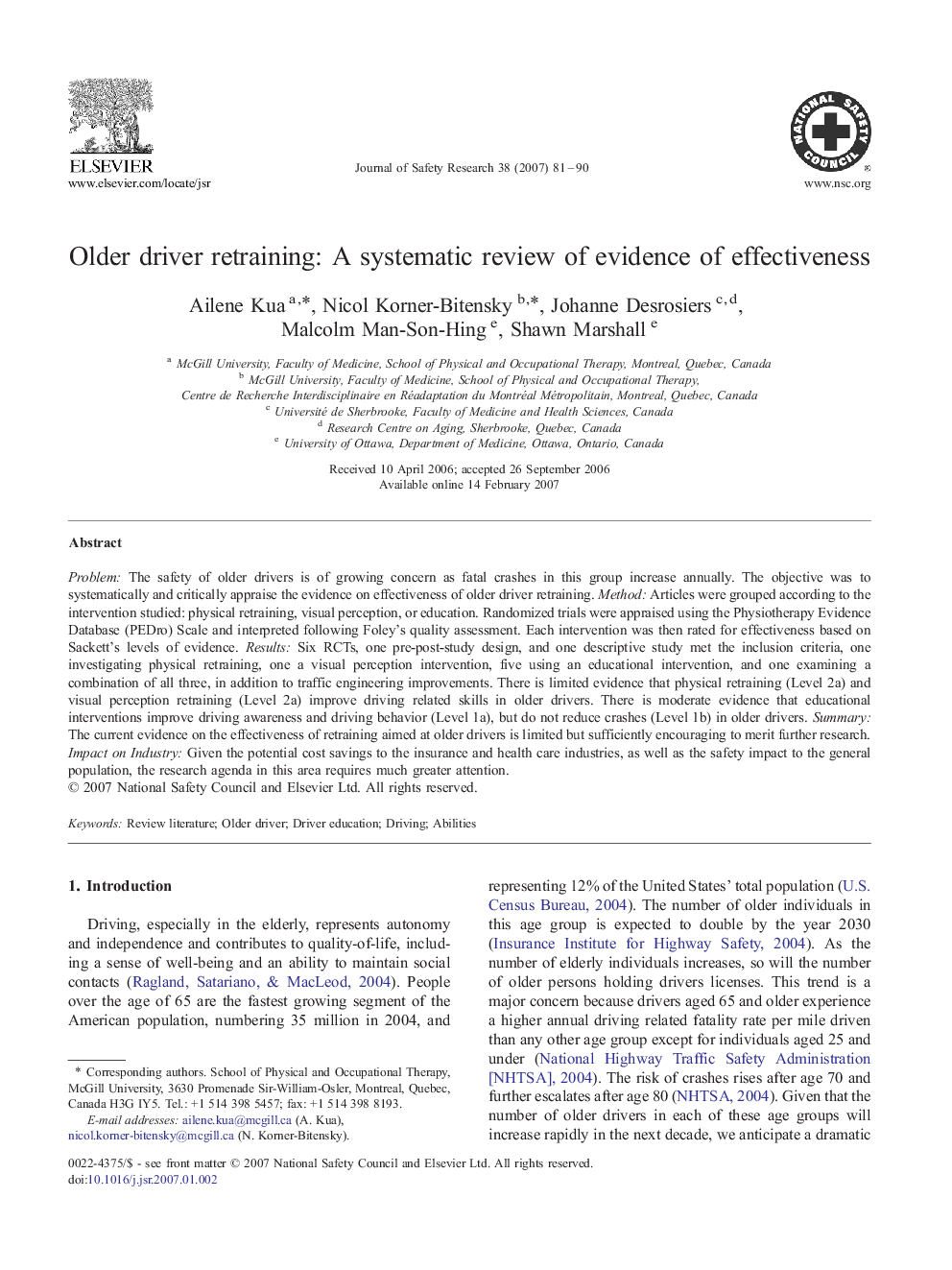| Article ID | Journal | Published Year | Pages | File Type |
|---|---|---|---|---|
| 587994 | Journal of Safety Research | 2007 | 10 Pages |
ProblemThe safety of older drivers is of growing concern as fatal crashes in this group increase annually. The objective was to systematically and critically appraise the evidence on effectiveness of older driver retraining.MethodArticles were grouped according to the intervention studied: physical retraining, visual perception, or education. Randomized trials were appraised using the Physiotherapy Evidence Database (PEDro) Scale and interpreted following Foley's quality assessment. Each intervention was then rated for effectiveness based on Sackett's levels of evidence.ResultsSix RCTs, one pre-post-study design, and one descriptive study met the inclusion criteria, one investigating physical retraining, one a visual perception intervention, five using an educational intervention, and one examining a combination of all three, in addition to traffic engineering improvements. There is limited evidence that physical retraining (Level 2a) and visual perception retraining (Level 2a) improve driving related skills in older drivers. There is moderate evidence that educational interventions improve driving awareness and driving behavior (Level 1a), but do not reduce crashes (Level 1b) in older drivers.SummaryThe current evidence on the effectiveness of retraining aimed at older drivers is limited but sufficiently encouraging to merit further research.Impact on IndustryGiven the potential cost savings to the insurance and health care industries, as well as the safety impact to the general population, the research agenda in this area requires much greater attention.
